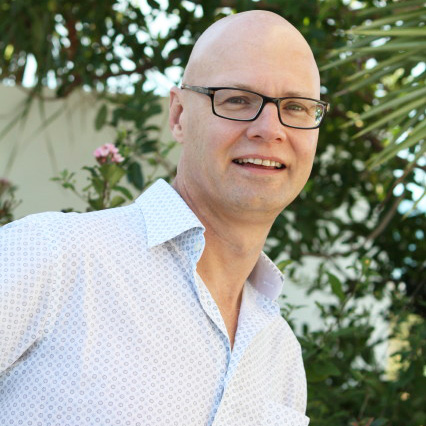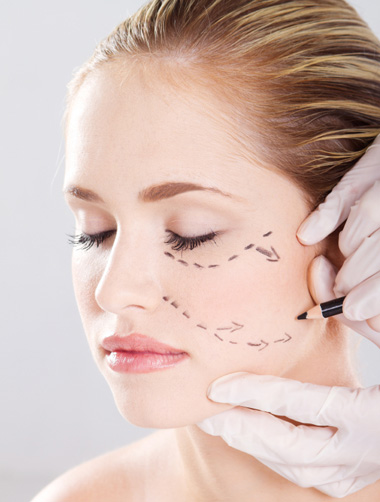WHAT IS LASER RESURFACING?
Specific types of lasers called Carbon Dioxide, Erbium, Microlaser and Sciton ProFractional lasers are used for this procedure. The laser emits a strong beam of light which can remove the outer layers of skin without damaging underlying tissue. This technique is used to treat some forms of acne scarring, badly sun damaged skin and the wrinkles, blemishes and ageing changes which occur because of sun damage and ageing. It can also be used to treat various other skin problems including sun damaged lips, thickened skin on the nose (rhinophyma), warts and other non-cancerous skin problems.
After the skin is fully healed, a smoother appearance and altered texture is noted.
HOW DOES THE LASER WORK?
The laser light hitting the skin surface heats up and destroys the outer layers of the skin without damaging the underlying layers. The outer layers are then wiped away and the procedure is repeated where necessary until a smoother surface is achieved.
WHERE DO I HAVE LASER RESURFACING DONE?
Laser resurfacing can be performed in an outpatient surgical facility or Hospital.
BEFORE SURGERY
Discuss with your Doctor any concerns or questions you may have. Inform your Doctor if you have ever had cold sores (Herpes simplex), used intravenous drugs, had contact with AIDS or ever had hepatitis.
Inform your Doctor of any illness, allergy or medication you take. Use any creams and take any tablets your Doctor may have requested you commence prior to surgery.
IS ANAESTHESIA REQUIRED?
Your Doctor may recommend either general anaesthesia or sedation and regional anaesthesia, or local anaesthesia only.
GENERAL ANAESTHETIC
Inform your Doctor of any previous problems with general anaesthesia or any general medical problems you may have, such as heart or breathing problems or allergies to medication. On the day of surgery you should have nothing to eat or drink from midnight the night prior to the procedure. You will need someone to take you home, approximately four hours after your procedure, and someone who can stay with you for the first 24 hours, unless you are staying overnight. Prior to the procedure a nurse will admit you to the facility and help you get ready. The Anaesthetist will come and speak with you, then take you into the operating room to prepare you for surgery and give the anaesthetic.
After surgery you will wake up in another room where a nurse will look after you until you are able to move to the lounge area or ward. Refreshments will be served there and you will be able to rest for a few hours until you are ready to go home.
At this stage the treated area will feel tight and swollen and you will have a large dressing over the whole area. You will need to return after one day for a dressing review. You will need to return in 4-5 days or earlier if necessary, to be reviewed by your Doctor.
LOCAL ANAESTHETIC
The nurse will take you into the operating room and the Doctor will come and talk with you and decide if any premedication is required. Your premedication may involve an injection and/or tablet which will be administered by the nurse. This will make you feel drowsy, but you will not be unconscious. On some occasions, a premedication will not be needed. Your Doctor will inject local anaesthetic into the treatment site to numb the area and wait for 15-30 minutes for the anaesthetic to take effect.
THE PROCEDURE
The procedure itself will take anything from five minutes to 90 minutes depending on the size of the area to be treated. All patients will be given special eye protection and there will be minimal discomfort during the procedure. A noisy vacuum pump is used to evacuate the fumes generated by the laser vaporising the skin.
WHAT HAPPENS AFTER THE LASER TREATMENT?
After the laser treatment is performed the area will be scrubbed down with a salt water solution and ointment and bandages applied. The nurse will explain how you are to look after the area, how to use any tablets or creams you may have been prescribed, and arrange your next appointment.
You should have complete rest until you return, when the nurse will show you how to look after the treated area. During the first week you will have quite noticeable discomfort. Some patients may feel a bit miserable in these first few days, but this will pass as you see your skin improving.
The facial dressings are removed in approximately 4-5 days then the nurse will explain cleansing and moisturising instructions. The benefits of camouflage makeup will be explained.
It is very important in the weeks and months following the surgery that you protect your skin from sun exposure, as the new skin is very sensitive and can discolour easily. Sunscreens and makeup are useful in this regard and can be used as soon as the skin has healed, which usually takes 7-10 days.
Any discomfort experienced in this period can be treated with Panadol, Panadeine or Panadeine Forte.
Improvement in the appearance of the skin will continue for several months after the procedure.
IS A SINGLE LASER TREATMENT SESSION ENOUGH?
One treatment session may be enough, however repeat treatment may be required to achieve maximal improvement in skin texture and contour.
CAN LASER RESURFACING BE COMBINED WITH OTHER PROCEDURES?
Yes. Sometimes other surgery prior to the laser resurfacing will be recommended, particularly for certain types of acne scars. Sometimes a combination of procedures will be recommended, such as laser and chemical peels, laser and excision surgery, or laser and fat injections. The need for these variations will be explained by your Doctor.
HOW LONG WILL I NEED OFF WORK?
Most people will require two weeks off work after laser treatment. Generally the skin will be healed in 7-10 days, but some areas may persist longer. By two weeks the skin will be healed over and most of the swelling will have gone but some redness will remain for several weeks after this. Makeup and sunscreen can be used as soon as the skin has healed over. In some patients the redness can remain for many weeks, but fading slowly throughout that time.
ARE THERE ANY COMPLICATIONS OF LASER RESURFACING?
The most common side effects and complications of laser surgery are:
HEALING WOUND
Laser surgery causes a superficial to deep wound to the skin, which takes several weeks to heal. The superficial burn of the outer layer of skin results in swelling, weeping and crusting of the treated area, which usually takes 1-4 weeks to heal. Once the surface has healed, it is pink and may be sensitive to the sun for another 2-4 weeks. A deep wound may be necessary to remove certain growths resulting in a crater-like wound that may take 2-6 weeks to heal and which usually heals with a scar.
PAIN
Most people feel some pain during treatment if no anaesthetic is used. The pain may range from mild to intense but fortunately is of short duration. A local anaesthetic is always used to block pain during treatment.
PIGMENT CHANGES
The treated area may heal with increased pigmentation (hyperpigmentation). This occurs most often in darker pigmented skin and following exposure of the area to the sun. Some patients have a predisposition to this type of reaction and may have noticed it with minor cuts, abrasions or acne lesions. It is thought that protecting the treated area from exposure to the sun for three months following treatment minimises the risk of hyperpigmentation. In some patients hyperpigmentation occurs even though the area has been protected from the sun.
Hyperpigmented spots usually fade away in 3-6 months; sometimes, however, the pigment change can be permanent. In other patients, the treated area may lose pigmentation (hypopigmentation) and become a lighter colour than the surrounding skin. When this occurs, the skin area will not tan normally. This type of reaction tends to gradually fade away, but may be permanent.
REDNESS
Everyone experiences redness, but the degree varies. In some people the redness will face within 6 weeks whilst for others it may take several months.
EXCESSIVE SWELLING
Immediately after laser surgery there may be swelling of the skin. This is a temporary condition and not harmful, but may be frightening. This swelling usually subsides in 3-7 days and requires frequent applications of ice treatment.
SCARRING
There is a small chance of scarring, including hypertrophic scars, which are thickened scars, and, very rarely, keloid scars, which are abnormal, heavy, raised scar formations which may extend beyond the limits of the original scar. Scarring is a rare occurrence but is a possibility because of the disruption of the skin surface. To minimise the chances of scarring, it is important that you follow all postoperative instructions carefully. If scarring does occur, treatment with creams and possibly injections may be required.
EYE EXPOSURE
Eyes need to be protected from laser energy. Suitable eye protection will be provided during procedures and should not be removed until advised that it is safe to do so.
OTHER COMPLICATIONS
Other sequelae of laser resurfacing may occur but are usually amenable to treatment. These include infection, cold sores, reactivation of mild acne and irritation by various creams. Persistent redness and sensitivity to the sun can also occur.
WHAT ARE THE POSSIBLE COMPLICATIONS IF I DO NOT HAVE THE LASER SURGERY PERFORMED?
Many of the conditions that are treated with laser may be treated with other medical modalities. If not treated at all, some of these conditions may worsen with time, such as skin cancers, precancerous growths and warts. However, some lesions are considered cosmetic in nature and pose no medical threat if not treated.
 Dr Russell Hills is an experienced cosmetic dermatologist based in Brisbane, Australia and is a member of the Academy of Facial Plastic Surgery. Dr Hills also has extensive experience in MOHS surgery for skin cancer removal, and is the principal Dermatologist at Aesthetix.
Dr Russell Hills is an experienced cosmetic dermatologist based in Brisbane, Australia and is a member of the Academy of Facial Plastic Surgery. Dr Hills also has extensive experience in MOHS surgery for skin cancer removal, and is the principal Dermatologist at Aesthetix.
Dr Hills regularly lectures on cosmetic and laser surgery and skin cancer removal, and has numerous publications on these topics. He is a member of a number of Australian and American medical associations, and attends local and international conferences to stay up-to-date with the latest approaches in cosmetic medicine.

Adherence to the information on this site will not ensure successful treatment in every situation and will not ensure specific results in the individual patient. Although complications may be rare, there are certain inherent risks connected with surgical procedures that should be discussed with the dermatologist. This Website contains very general information and any procedures mentioned in it should be discussed in detail with your dermatologist at the time of consultation.
Laser Surgery – Micro Laser Peel – Dr Russell Hills – Aesthetix – Cosmetic Surgery Brisbane, Facial Plastic Surgery. Laser Surgery, scar removal, laxity improvement, active acne treatment, skin pigmentation problems Brisbane.
Our clinics are based in Auchenflower and Nundah, Brisbane. We service clients in the greater Brisbane area, including but not limited to: central Brisbane CBD, Auchenflower, Paddington, West End, Bardon, Toowong, Spring Hill, Kangaroo Point, New Farm, East Brisbane, Newstead, Kelvin Grove, Ashgrove, Indooroopilly, The Gap, Highgate Hill, Chapel Hill, Morningside, Bulimba, Enoggera, Grange, Lutyche, Clayfield, Nundah, Chermside, Everton Hills, Everton Park, Greenslopes, Sandgate, Woollongabba, Southbank, Carindale, Mount Gravatt, Moorooka, Acacia Ridge, Logan, Springwood, Nudgee, Ascot, Hamilton, Taringa, Annerley, Yeronga, Tennyson, Graceville, Sherwood, St Lucia, Kenmore, Brookfield, Coorparoo, Red Hill, Milton, South Brisbane, North Brisbane.